Wild turkeys are a fascinating part of North America’s wildlife. Did you know they play a vital role in maintaining ecosystems? These birds are divided into five main subspecies, each with unique traits, plus the stunning Ocellated turkey found in Central America. Understanding the different types of turkeys helps hunters and wildlife enthusiasts appreciate their diversity and identify them in the wild. In the article, we will introduce them to you one by one.
Eastern Wild Turkey
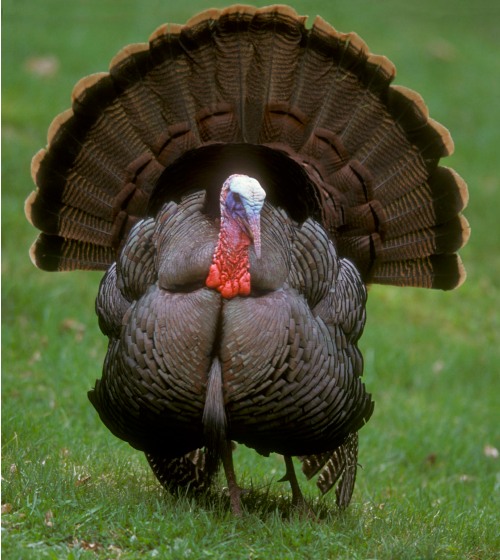
Eastern Wild Turkey By Riki7
Physical Characteristics
The Eastern Wild Turkey is the largest and most widespread of all the types of turkeys in North America. However, recent research shows that eastern wild turkeys face challenges, with occupancy rates as low as 0.07 in some areas.
Males, or gobblers, are impressive birds, weighing between 17 – 21 pounds and standing up to 40 inches tall. Some larger males can even reach 30 pounds!
Their feathers shimmer with an iridescent gold and green sheen, making them stand out in the sunlight. Females, on the other hand, are smaller, weighing 8-11 pounds and standing about 30 inches tall. Their feathers are more muted, with drab colors that help them blend into their surroundings. Newly hatched poults are tiny, weighing just 2 ounces, but they grow quickly in their first few weeks.
Habitat and Range
You can find Eastern Wild Turkeys across the eastern half of the United States, southern Canada, and even parts of central Mexico.
They thrive in a variety of habitats, including swamps, mountain pine forests, arid brush, and even suburban edges. These birds are incredibly adaptable, which has helped them recover from near extinction in the early 20th century.
Conservation efforts brought them back to nearly all U.S. states by the early 2000s. However, recent studies show a decline in some areas, particularly in southeastern states like Alabama and Georgia.
“They’ve responded to changing habitat conditions when comparing today’s landscapes to those of 50 years ago… However, I anticipate numbers will always fluctuate based on habitat and environmental factors that impact annual reproduction and poult survival within their range.”
| Year | Population Change | States Reporting Decline | Notable States with Decline |
| Early 2000s | Peak population | N/A | N/A |
| 2014-2019 | Decline in 8 of 30 states | 8 | Alabama, Arkansas, Georgia, Louisiana, Oklahoma |
| 2023 | Decline by ~9% yearly | N/A | N/A |
Notable Traits
Eastern Wild Turkeys are known for their size and striking appearance. Males can grow up to 4 feet tall, with tail feathers tipped in chestnut brown. Their gobble is loud and carries over long distances, making it a signature sound of the eastern forests.
These turkeys are also highly social, often forming flocks that forage together for food like acorns, seeds, and insects. Their ability to adapt to different environments has made them one of the most resilient types of turkeys in North America.
Eastern Turkey Hunting Tips
Hunting Eastern Wild Turkeys can be both challenging and rewarding. These birds are smart and have sharp senses, so preparation is key. Here are some tips to help you succeed:
- Scout the Area Early: Spend time observing their habits before the turkey season Look for roosting sites, feeding areas, and travel routes. Early mornings and late afternoons are the best times to spot them.
- Master Your Calls: Turkeys respond to a variety of calls, including clucks, purrs, and gobbles. Practice using a box call, slate call, or diaphragm call to mimic their sounds. The more natural your call, the better your chances of attracting a gobbler.
- Blend In with Your Surroundings: Wear full camouflage, including gloves and a face mask. Turkeys have excellent eyesight and can spot movement from far away. Staying still and blending into the environment increases your odds of staying undetected.
- Set Up Strategically: Position yourself near known turkey hotspots, like feeding areas or strut zones. Sit with your back against a tree or large object to break up your outline and protect your back.
- Be Patient: Turkeys can take their time responding to calls. Stay quiet and wait for them to come to you. Moving too soon might scare them off.
Pro Tip: Use decoys to lure turkeys closer. A hen decoy paired with a jake decoy can attract male turkey looking to defend their territory.
Remember, hunting Eastern Wild Turkeys requires patience, skill, and respect for the animal. Follow local regulations and practice ethical hunting to ensure a safe and enjoyable experience.
Osceola Wild Turkey (Florida Turkey)
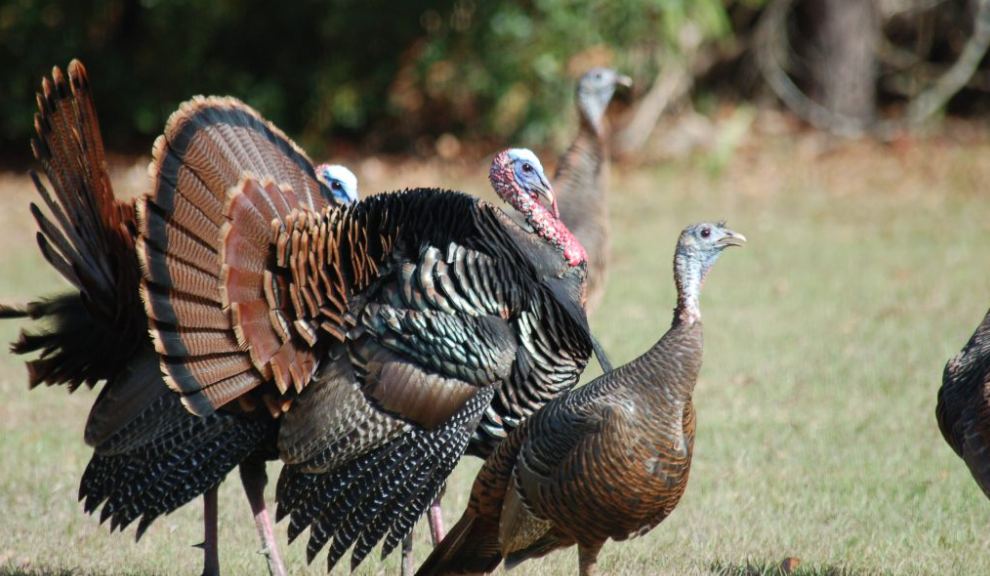
Osceola turkeys by Chad Weber-FWC
Physical Characteristics
The Osceola Wild Turkey, also known as the Florida Turkey, is a smaller and darker subspecies compared to others. Its unique features make it stand out among the other types of turkeys.
Males typically weigh between 16 – 19 pounds, with 20 pounds being considered heavy. Hens are lighter, averaging 10-12 pounds.
These turkeys have long legs, which help them navigate Florida’s swampy terrain. Their feathers are darker, with less bronze and more red and green hues. The wing feathers are black with irregular white streaks, giving them a striking appearance.
Here’s a quick breakdown of their physical traits:
| Trait | Measurement/Description |
| Wing Feathers | Black with irregular white streaks |
| Average Weight | 16-19 pounds (20 pounds considered heavy) |
| Beard Length | Commonly 8-10 inches |
| Spur Length | Commonly around 1¼ inches |
Habitat and Range
You’ll only find Osceola Wild Turkeys in Florida, specifically in the southern three-quarters of the Peninsula. They thrive in dense vegetation, especially areas with saw palmetto cover. This provides excellent concealment for nesting and protection from predators.
Research highlighted two key habitats: the Quail Enhancement Area of Three Lakes Wildlife Management Area and Longino Ranch. These locations represent typical Florida ecosystems, showcasing the turkey’s preference for swampy, forested areas.
Notable Traits
Osceola Wild Turkeys are known for their distinct appearance and behaviors. They are smaller and darker than Eastern Wild Turkeys, with darker wing feathers and tail fan tips. Their coloration features fewer bronze and more red and green tones.
Despite their similarities to Eastern turkeys, genetic studies confirm that Osceolas are a distinct subspecies. They also have longer spurs and shorter beards compared to their Eastern relatives.
These turkeys are highly adapted to Florida’s wet, swampy environment. Their long legs make it easier to move through challenging terrain. You’ll often hear their gobbles echoing through the dense vegetation, a sound that’s unmistakable in the Florida wilderness.
Osceola Turkey Hunting Tips
Hunting Osceola Wild Turkeys in Florida can be a thrilling experience, but it requires strategy. These birds are cautious and thrive in unique habitats, so understanding their behavior and environment is key to success.
Start by scouting areas like pine savannas, oak hammocks, and cypress heads. These habitats are prime spots for Osceola turkeys. Tools like the HuntStand App or distribution maps from the Florida Fish and Wildlife Conservation Commission (FWC) can help you locate regions with moderate to high turkey populations. Once you’ve identified a good area, spend time observing their patterns.
When setting up, use a ground blind for effective concealment. Osceola turkeys have sharp eyesight and can spot movement easily. Blending into your surroundings is crucial.
If you’re hunting in open areas like cattle pastures, creative decoy setups can make all the difference. Mimic a small flock by using a mix of decoys to attract dominant gobblers.
Pro Tip: Call to the hens instead of the gobbler. If you can draw the hens closer, the gobbler will often follow.
For stubborn toms, try the pendulum play technique. This involves moving slowly and calling from different angles to create the illusion of a moving turkey. Afternoon hunts can also be productive, as turkeys often return to feeding areas later in the day. Be patient and move cautiously—Osceola turkeys are known for their wariness.
If the dominant gobbler isn’t responding, don’t give up. Focus on satellite toms, which are less aggressive and more likely to approach. Adding extra sounds, like scratching leaves, can enhance realism and increase your chances of success.
With the right preparation and techniques, you’ll improve your odds of bagging an Osceola Wild Turkey!
Rio Grande Wild Turkey

Physical Characteristics
The Rio Grande Wild Turkey is a medium-sized bird with striking features. Males, or gobblers, typically weigh between 20-24 pounds, while females, or hens, are smaller, averaging 8-12 pounds.
Their feathers have a coppery-bronze sheen, which glimmers beautifully in the sunlight. The tail feathers are tipped with a light tan color, giving them a distinct look compared to other types of turkeys.
Gobblers also sport long beards, often measuring 8-10 inches, and sharp spurs that can grow up to 1.5 inches. Hens, on the other hand, have more subdued coloring, which helps them blend into their surroundings while nesting.
Habitat and Range
You’ll find Rio Grande Wild Turkeys in the central and western parts of the United States, particularly in Texas, Oklahoma, Kansas, and parts of New Mexico.
They thrive in areas with moderate rainfall, which supports their food sources like seeds, insects, and small fruits. The Edwards Plateau in Texas serves as their historic geographic center and currently hosts the highest population.
Hens tend to explore larger areas before laying eggs, which suggests they’re searching for the perfect nesting spot. This behavior highlights their adaptability and resourcefulness in finding safe environments for their young.
Notable Traits
Rio Grande Wild Turkeys are known for their adaptability and resilience. They can thrive in diverse habitats, from open grasslands to brushy areas near rivers. Their gobble is loud and carries over long distances, making it a signature sound in their range. These turkeys are also highly social, often forming large flocks during the winter months.
One unique trait is their ability to survive in semi-arid environments. Their diet includes a mix of seeds, grains, and insects, which helps them adapt to areas with limited resources.
You’ll often see them roosting in tall trees at night for safety. Their striking appearance and adaptability make them one of the most fascinating types of turkeys to observe in the wild.
Rio Grande Turkey Hunting Tips
Hunting Rio Grande Wild Turkeys can be an exciting challenge. These birds are clever and thrive in diverse environments, so preparation is key. Here are some tips to help you succeed:
- Scout the Area: Look for signs like tracks, droppings, and feathers. Early mornings are the best time to spot them heading to feeding areas or roosting sites.
- Choose the Right Gear: Use lightweight, breathable clothing since Rio Grande turkeys often live in warmer climates. Full camouflage isalso
- Master Your Calling Skills: Practice using turkey calls like box calls, slate calls, or diaphragm calls. Rio Grande turkeys respond well to realistic clucks, yelps, and purrs. Start with soft calls and increase volume if needed.
- Set Up Near Roosting Areas: These turkeys often roost in tall trees near water sources. Position yourself nearby but stay hidden. Use natural cover or a ground blind to blend into the environment.
- Use Decoys Strategically: A hen decoy paired with a jake decoy can attract dominant gobblers. Place the decoys in open areas where they’re easy to spot. This setup often triggers a gobbler’s territorial instincts.
Pro Tip: If a gobbler hangs up out of range, try moving slightly and calling from a different angle. This can make the bird think a rival is moving closer to its territory.
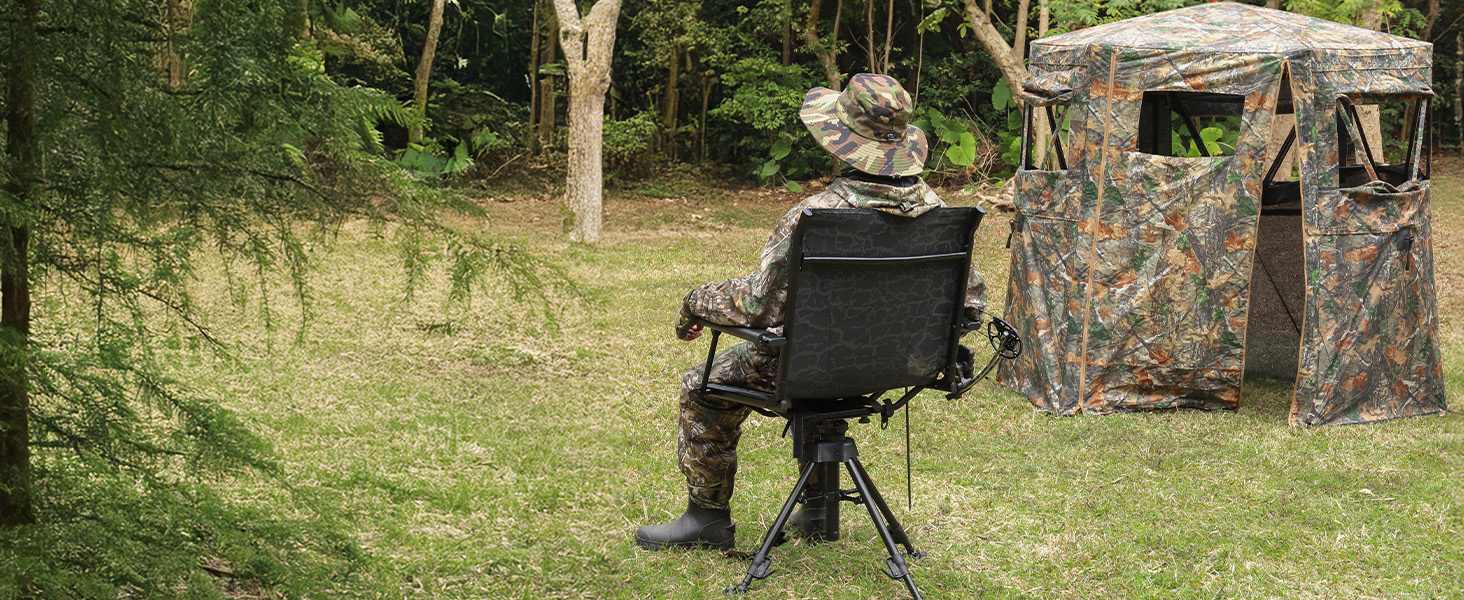
Go turkey hunting with Kalkal hunting chair and blind, where comfort meets stealth for the ultimate outdoor experience!
Merriam’s Wild Turkey
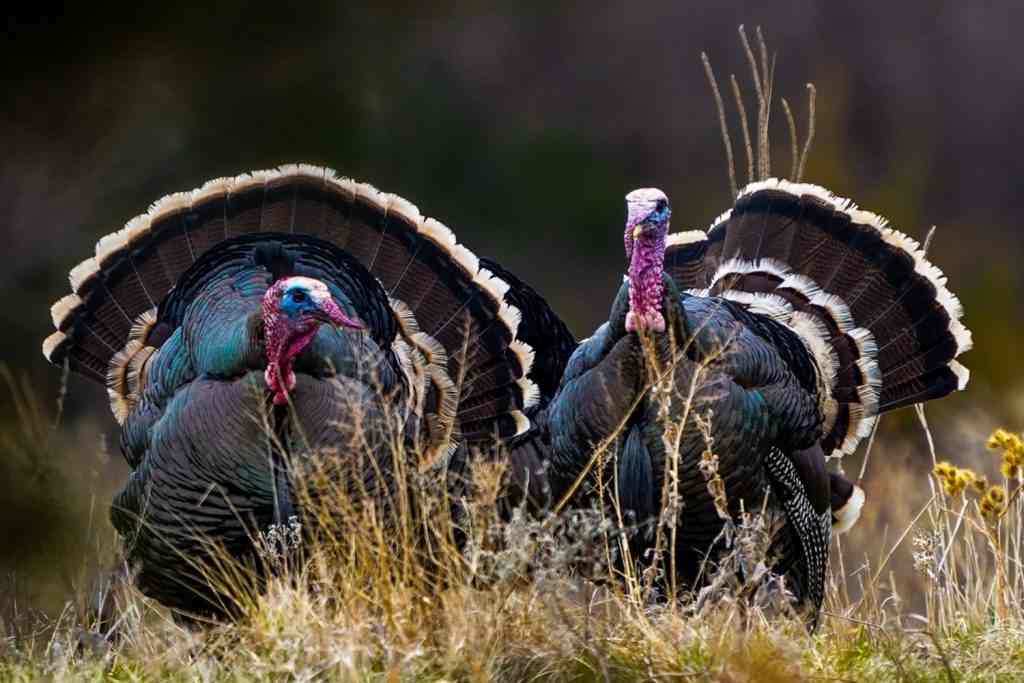
Physical Characteristics
Merriam’s Wild Turkey is one of the most striking types of turkeys you’ll encounter. Adult males, known as gobblers, weigh over 20 pounds, making them the largest game bird in North America.
Their feathers shimmer with an iridescent sheen, showing hues of green and copper that catch the sunlight beautifully. Females, or hens, are smaller and less colorful, but some may grow a beard—a feature typically associated with males.
| Characteristic | Description |
| Size | Adult males weigh more than 20 pounds, making them the largest game bird in North America. |
| Coloration | Brown feathers with an iridescent sheen, displaying hues of green and copper. |
| Sexual Dimorphism | Males are larger, heavier, and more colorful than females. Some females may also grow a beard, but they are typically smaller. |
| Beard | Modified feathers used to determine age and health; longer beards indicate older males in good condition. |
These beards, made of modified feathers, help determine the bird’s age and health. Longer beards often indicate older, healthier males.
Habitat and Range
Merriam’s Wild Turkey thrives in mountainous regions of the western United States. You’ll often find them at elevations ranging from 1,067 to 3,048 meters.
During summer, they prefer higher elevations, while winter sees them moving to lower areas. Their roosting habits are tied to old-growth conifers like ponderosa pine, Douglas fir, and Engelmann spruce. These trees provide safety and shelter, especially during colder months.
Their home range varies by season. In winter, they stick to smaller areas of about 3.47 km², but in spring, their range expands to over 42 km².
Gobblers tend to travel shorter distances, averaging 3.7 km, while hens cover more ground, sometimes dispersing up to 64 km between wintering and breeding sites. Merriam’s turkeys also rely on surface water during warm, dry months, though they can adapt to drier habitats when necessary.
Notable Traits
Merriam’s Wild Turkey stands out for its adaptability and resilience. These birds are well-suited to mountainous terrain, where they navigate steep slopes and dense forests with ease.
Their gobble is loud and echoes through the valleys, making it a signature sound of their habitat. They’re also highly social, forming large flocks during winter to forage together.
One fascinating trait is their seasonal movement. Hens travel farther than gobblers, often covering significant distances to find the perfect nesting spot. This behavior ensures their young have the best chance of survival.
Merriam’s turkeys also show remarkable adaptability in their diet, consuming seeds, insects, and berries, depending on availability. Their ability to thrive in diverse environments makes them a favorite among wildlife enthusiasts and hunters alike.
Merriam’s Turkey Hunting Tips
Hunting Merriam’s Wild Turkey can be a thrilling experience, especially in the mountainous terrain they call home. These birds are clever and cautious, so you’ll need a solid strategy to outsmart them. Here are some tips to help you succeed:
- Scout the Terrain: Merriam’s turkeys live in rugged, forested areas. Pay attention to roosting trees, which are often tall conifers like ponderosa pines. Early mornings are the best time to spot them leaving their roosts.
- Adapt to the Elevation: These turkeys often move between elevations depending on the season. In spring, they may be higher up, while in winter, they stick to lower areas. Adjust your hunting location based on the time of year.
- Master Your Calling Skills: Merriam’s turkeys respond well to realistic calls. Practice using a variety of calls, like clucks, yelps, and gobbles. Start with soft calls to avoid spooking them. If you don’t get a response, gradually increase the volume.
- Use Decoys Effectively: Place your decoys in open areas where they’re easy to see. This setup often triggers a gobbler’s territorial instincts.
Pro Tip: Merriam’s turkeys are highly vocal. Use their gobbles to locate them, but don’t overcall. Too much noise can make them suspicious.
Gould’s Wild Turkey

Gould’s Wild Turkey by www.nwtf.org
Physical Characteristics
Gould’s Wild Turkey is the largest of the five North American subspecies. Males, or gobblers, can weigh up to 20 pounds, while females, or hens, are smaller, averaging around 12 pounds.
Their feathers are stunning, with a coppery-bronze sheen that glimmers in the sunlight. The tail feathers are tipped with white, giving them a striking appearance compared to other types of turkeys.
Gobblers also have long, sharp spurs and beards that can grow up to 10 inches. Hens, on the other hand, have more muted colors, which help them blend into their surroundings while nesting.
Habitat and Range
You’ll find Gould’s Wild Turkeys in the mountainous, semi-arid regions of southeastern Arizona and northern Mexico. These birds prefer habitats at moderate elevations, typically ranging from 1,223 to 2,971 meters, with an average of about 1,641 meters.
They thrive in pine forests and riparian corridors, which provide essential resources like food and roosting sites. North-facing slopes are especially important because they’re cooler and support more productive vegetation.
The climate in their range is mild, with average annual temperatures between 7.2°C and 16.7°C. Precipitation averages around 579 mm per year, which supports the vegetation these turkeys rely on. If you’re exploring these areas, keep an eye out for them in pine forests or near water sources, where they often forage and roost.
Notable Traits
Gould’s Wild Turkey is known for its adaptability to rugged, mountainous terrain. These birds are excellent climbers and can navigate steep slopes with ease.
Their gobble is loud and echoes through the canyons, making it a signature sound of their habitat. They’re also highly social, forming flocks during the winter months to forage together.
One unique trait is their preference for cooler, north-facing slopes. This choice helps them access better vegetation and stay comfortable in warmer months.
Gould’s turkeys also have a diverse diet, feeding on seeds, insects, and berries, depending on what’s available. Their ability to thrive in challenging environments makes them a fascinating subspecies to observe in the wild.
Gould’s Turkeys Hunting Tips
Hunting Gould’s Wild Turkey can be a rewarding challenge. These birds are cautious and thrive in rugged terrain, so preparation is key. Here are some tips to help you succeed:
- Start Early: Gould’s turkeys are most active in the morning. Begin your hunt at the edge of a wooded area near an open field. This is where they often forage during spring and summer.
- Focus on Cadence: When calling, the rhythm of your yelps matters more than the tone. Practice a natural cadence to mimic a hen. Many hunters find this technique significantly improves their success.
- Stay Close: Get as close to a gobbler as possible before calling. Aim to be within 100 yards or closer. Use soft calls initially to gauge the bird’s response. Gradually increase volume if needed.
Pro Tip: Use binoculars to spot gobblers from a distance. Once you locate one, approach stealthily to avoid spooking it.
Ocellated Wild Turkey
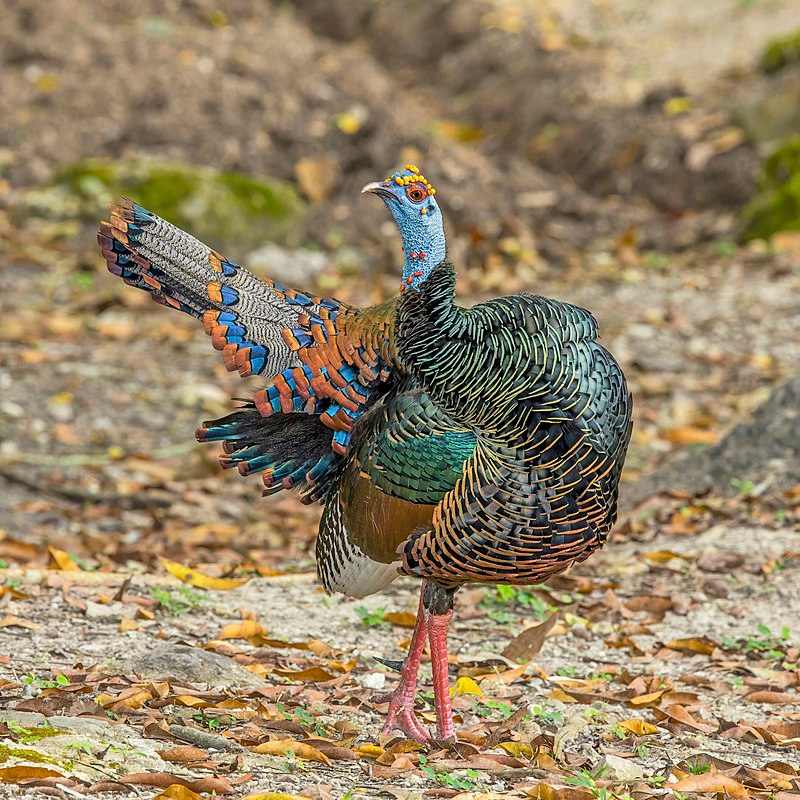
Physical Characteristics
The Ocellated Wild Turkey is a true spectacle of nature. Unlike the North American types of turkeys, this species is smaller and more vibrant.
Males weigh just over 10 pounds, while females are lighter at around 6 pounds. Their average length is about 3 feet, with females being slightly smaller. What really sets them apart is their stunning coloration. Both sexes have iridescent bronze-green feathers that shimmer in the sunlight, but males are more brightly colored.
Their heads and necks feature warty growths in shades of orange to red, which are more pronounced in males. These growths become even more vibrant during the breeding season. Their tail feathers are another standout feature. They’re bluish-gray with eye-shaped blue-bronze spots and gold tips, giving them a unique and elegant appearance.
| Characteristic | Males | Females |
| Weight | Just over 10 pounds | Around 6 pounds |
| Length | Average 3 feet | Slightly smaller |
| Coloration | Iridescent bronze-green, more brightly colored | Iridescent bronze-green, less bright |
| Head and Neck Growths | More pronounced orange to red warty growths | Less pronounced growths |
| Tail | Bluish-gray with eye-shaped blue-bronze spot and gold tip | Bluish-gray with eye-shaped blue-bronze spot and gold tip |
Habitat and Range
You’ll find Ocellated Wild Turkeys in the tropical forests of Central America. Their range includes parts of Mexico, Belize, and Guatemala.
These birds thrive in diverse ecosystems, from lowland rainforests to savannas. They prefer areas with dense vegetation, which provides cover from predators and supports their diet of seeds, insects, and native plants.
During the breeding season, they often move to open areas where males can display their plumage and attract mates. However, their nesting behavior makes them vulnerable.
Females frequently nest in trees, which exposes their eggs to predators like snakes and birds of prey. Despite these challenges, their adaptability allows them to survive in a variety of environments.
Notable Traits
The Ocellated Wild Turkey is famous for its dazzling appearance and unique behaviors. Its iridescent plumage and eye-like spots on the tail feathers make it a favorite among bird enthusiasts.
Males use their vibrant colors to attract mates, while their vocalizations play a key role in courtship. They produce a drumming sound, and females respond with softer clucks and purrs.
These turkeys are highly adaptable. They thrive in different habitats and rely on a diet rich in seeds, insects, and native plants. However, they face health challenges in regions like Guatemala and Belize. Monitoring for diseases and ensuring proper nutrition during the breeding season is essential for their survival.
Ocellated Turkey Hunting Tips
Hunting the Ocellated Wild Turkey is a unique experience, and preparation is key to success. These birds are smaller and more elusive than their North American relatives, so you’ll need to adjust your approach. Here are some tips to help you on your hunt:
- Pick the Right Locations: Ocellated turkeys live in the tropical forests of Central America. Look for them near agricultural fields on the edges of jungles. These areas often serve as feeding grounds, making them prime hunting spots.
- Use a Blind for Concealment: Setting up a blind near these fields can give you the cover you need. Turkeyscan spot movement easily. Staying hidden increases your chances of success.
- Electronic Calling Techniques: Electronic callers work exceptionally well for this species. They mimic the unique sounds of the Ocellated turkey, drawing them out of dense vegetation. Practice using these tools to sound as natural as possible.
- Hunt with Skilled Guides: Many hunters report a 100% success rate when working with experienced guides. These professionals know the terrain and the turkeys’ habits, giving you a significant advantage.
Pro Tip: Pair your calls with decoys to create a realistic setup. A well-placed decoy can lure a curious gobbler into range.
Conclusion
Now that you’ve explored the six types of turkeys and every subspecies has unique traits, you can see how each one stands out. Understanding these differences not only helps you identify them but also deepens your appreciation and hunting strategies.
Keep this guide handy when you’re out in the wild. It’ll make spotting and hunting these turkeys easier and even more exciting!
Here’s a quick reference to help you distinguish them:
| Turkey Type | Key Feature | Habitat Range |
| Eastern Wild Turkey | Largest, with iridescent gold-green feathers | Eastern U.S., southern Canada, Mexico |
| Osceola Wild Turkey | Smaller, darker, with long legs | Florida |
| Rio Grande Wild Turkey | Light tan tail tips, thrives in semi-arid areas | Central U.S., Texas |
| Merriam’s Wild Turkey | Iridescent green-copper feathers, mountain dweller | Western U.S. |
| Gould’s Wild Turkey | Largest subspecies, white-tipped tail feathers | Arizona, northern Mexico |
| Ocellated Wild Turkey | Vibrant bronze-green plumage, eye-like tail spots | Central America |


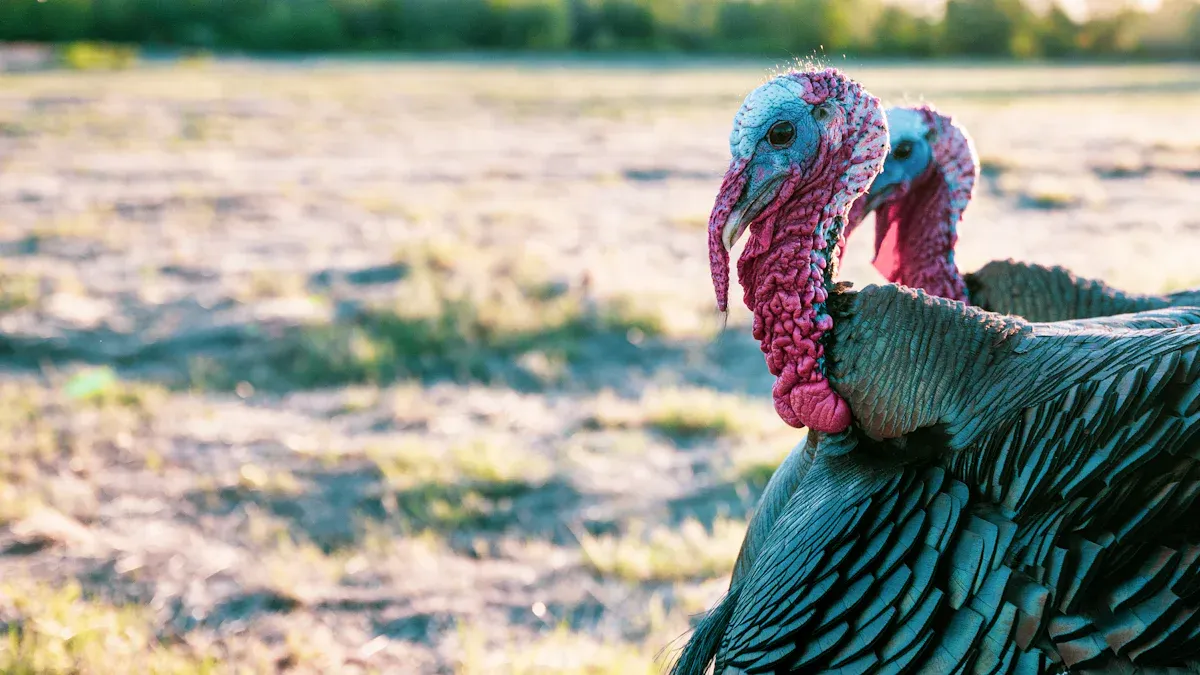
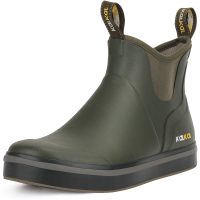



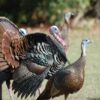

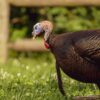

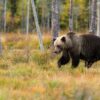
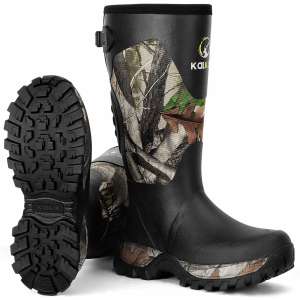
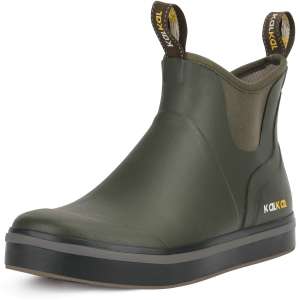

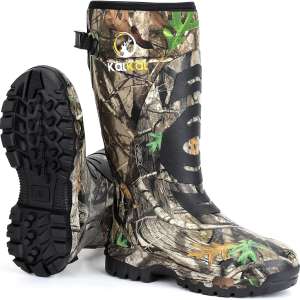




Leave a reply